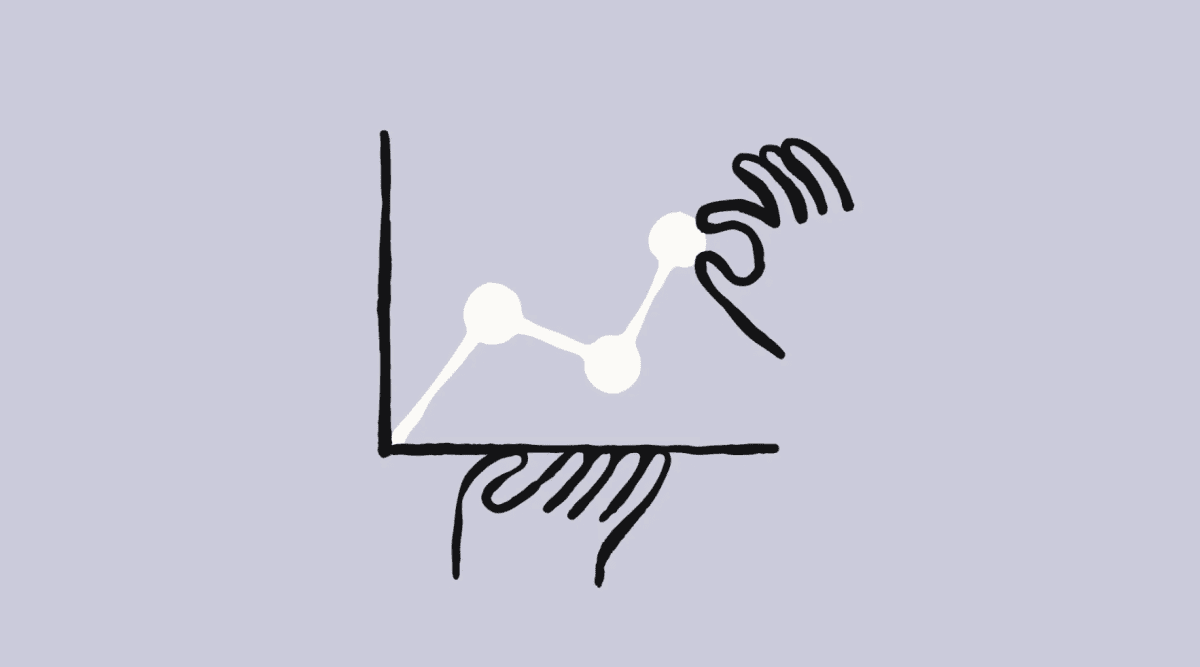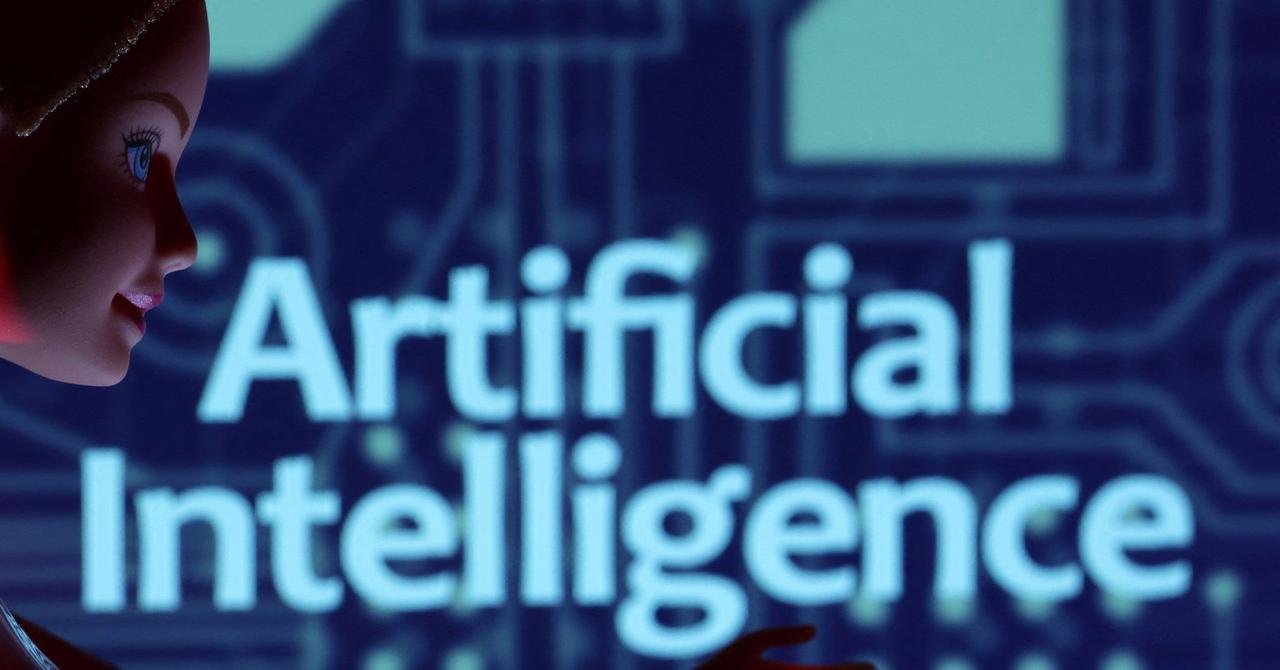Anthropic's Economic Index Reveals AI's Impact on Workforce: Software Engineering Leads Adoption
6 Sources
6 Sources
[1]
Who's using AI the most? The Anthropic Economic Index breaks down the data
Join our daily and weekly newsletters for the latest updates and exclusive content on industry-leading AI coverage. Learn More Artificial intelligence is reshaping the modern workplace, but until now, its impact on individual tasks and occupations has been difficult to quantify. A new report from Anthropic, the AI startup behind Claude, offers a data-driven view of how businesses and professionals are integrating AI into their work. The Anthropic Economic Index, released today, provides a detailed analysis of AI usage across industries, drawing from millions of anonymized conversations with Claude, Anthropic's AI assistant. The report finds that while AI is not yet broadly automating entire jobs, it is being widely used to augment specific tasks -- especially in software development, technical writing, and business analysis. "AI usage primarily concentrates in software development and writing tasks, which together account for nearly half of all total usage," the report states. "However, usage of AI extends more broadly across the economy, with ~36% of occupations using AI for at least a quarter of their associated tasks." Not just hype: A ground-level view of AI adoption Unlike previous studies that have relied on expert predictions or self-reported surveys, Anthropic's research is based on direct analysis of how workers are actually using AI. The company leveraged its privacy-preserving analysis tool, Clio, to examine over four million user conversations with Claude. These interactions were then mapped to occupational categories from the U.S. Department of Labor's O*NET database. The data suggests that AI is playing a significant role as a collaborative tool rather than simply an automation engine. In fact, 57% of AI usage in the dataset involved "augmentation," meaning AI was assisting workers rather than replacing them. This includes tasks such as brainstorming, refining ideas, and checking work for accuracy. The remaining 43% of usage fell into the category of direct automation, where AI performed tasks with minimal human involvement. This balance between augmentation and automation is a crucial indicator of how businesses are deploying AI today. "We find that 57% of interactions show augmentative patterns (e.g., back-and-forth iteration on a task) while 43% suggest automation (e.g., fulfilling a request with minimal human involvement)," the report states. More partner than replacement: AI is boosting, not eliminating, jobs One of the report's most striking conclusions is that AI is not rendering entire job roles obsolete. Instead, it is being adopted selectively, assisting with specific tasks rather than fully automating occupations. "Only ~4% of occupations exhibit AI usage for at least 75% of their tasks, suggesting the potential for deep task-level use in some roles," the report notes. "More broadly, ~36% of occupations show usage in at least 25% of their tasks, indicating that AI has already begun to diffuse into task portfolios across a substantial portion of the workforce." This selective adoption suggests that while AI is transforming work, it is not yet leading to widespread job displacement. Instead, professionals are using AI to enhance productivity, offload repetitive work, and improve decision-making. Tech, media, and business lead the charge -- but some jobs are left behind The report identifies software engineering as the field with the highest AI adoption, accounting for 37.2% of the analyzed conversations. These interactions typically involved tasks like debugging code, modifying software, and troubleshooting networks. The second-highest category of use was in creative and editorial work, including roles in media, marketing, and content production (10.3% of queries). AI is widely used to draft and refine text, assist with research, and generate ideas. However, AI usage was significantly lower in fields that require physical labor, such as healthcare, transportation, and agriculture. For example, only 0.1% of analyzed conversations were related to farming, fishing, and forestry tasks. This disparity highlights the current limitations of AI, which excels at text-based and analytical tasks but struggles with jobs that require hands-on work, manual dexterity, or complex interpersonal interactions. AI's wage divide: The surprising sweet spot for adoption One of the most intriguing findings of the report is that AI usage does not follow a simple pattern when correlated with wages. Rather than being concentrated in either low- or high-wage jobs, AI adoption peaks in the mid-to-high salary range. "AI use peaks in the upper quartile of wages but drops off at both extremes of the wage spectrum," the report notes. "Most high-usage occupations clustered in the upper quartile correspond predominantly to software industry positions, while both very high-wage occupations (e.g., physicians) and low-wage positions (e.g., restaurant workers) demonstrate relatively low usage." This means that AI is being adopted most aggressively in roles that require analytical and technical skills but not necessarily the highest levels of specialized expertise. It also raises important questions about whether AI will exacerbate or mitigate existing economic inequalities -- particularly if lower-wage workers have less access to AI's productivity-boosting benefits. What business leaders need to know as AI reshapes the workforce For technical decision-makers, the report provides a roadmap for where AI is likely to have the greatest near-term impact. The data suggests that businesses should focus on AI adoption in knowledge-based professions where augmentation, rather than outright replacement, is the dominant pattern. The report also provides an early warning for policymakers: while AI is not yet replacing entire jobs at scale, its increasing presence in high-value tasks could have a profound impact on workforce dynamics. "AI has already begun to diffuse into task portfolios across a substantial portion of the workforce," the report states. "While our data reveals where AI is being used today, inferring long-term consequences from these early usage trends poses significant empirical challenges." Anthropic has open-sourced the dataset behind its analysis, inviting researchers to further explore how AI is shaping the economy. The AI economy is here -- are we ready? The Anthropic Economic Index provides one of the most comprehensive snapshots yet of how AI is being used in the workplace -- not in theory, but in practice. Its findings suggest that AI is not leading to the mass job displacement that many have feared, but it is changing the nature of work in meaningful ways. For companies, this means AI adoption isn't just about cutting costs -- it's about unlocking new efficiencies and creativity. For policymakers, it raises urgent questions about how to ensure that AI's benefits are distributed equitably, rather than deepening existing economic divides. The challenge ahead lies not just in measuring these changes, but in preparing for them. If AI continues to expand its role in the workforce, the businesses and workers that learn how to use it effectively will thrive. Those who ignore it risk being left behind.
[2]
The work tasks people use Claude AI for most, according to Anthropic
Anthropic's first Economic Index sheds light on who's using AI for what, and how much of our work it's actually automating. As AI adoption grows, many are wondering how it will impact the labor market long-term (ChatGPT Deep Research has its own predictions). Anthropic is trying to find out. On Monday, the company published its first Economic Index, which investigates what kinds of employees are using Anthropic's Claude chatbot and for what types of tasks. Taking a different approach than many AI and work studies hoping to map the future, Anthropic focused on similarities in work tasks rather than job titles, and on actual chatbot queries instead of survey responses. Also: Crawl, then walk, before you run with AI agents, experts recommend "Jobs often share certain tasks and skills in common: For example, visual pattern recognition is a task performed by designers, photographers, security screeners, and radiologists," the company explains in the report announcement. Using its own Clio system for privacy, Anthropic analyzed 1 million anonymized conversations Claude Free and Pro users had with the chatbot. Mapping each to the Occupational Information Network (O*NET), a US Department of Labor database of 20,000 work tasks, Clio identified which task "best represented the role of the AI" in each conversation, Anthropic's announcement explains. Chats were then grouped into job categories such as arts and media, computer and mathematical, and business and financial. Software engineering tasks made up the majority of the queries in the dataset -- 37.2% of conversations had to do with debugging code, network troubleshooting, and more, which is somewhat to be expected given that Claude positions itself as a coding-first model. The next-largest category of queries had to do with writing and editing at 10.3%, which Anthropic grouped as "arts, design, sports, entertainment, and media" jobs like copywriting. Also: I pitted Claude 3.5 Sonnet against AI coding tests ChatGPT aced - and it failed creatively The study observed that these two job categories make up only 3.4% and 1.4% of the US economy, respectively -- much less than office admin and sales jobs, for example -- but use AI at much higher rates. Jobs in science and education also showed higher rates of AI use relative to their saturation in the economy. Beyond programming, top tasks within these four categories included producing for entertainment like film and TV, conducting research, and creating educational materials. The report also found that AI augments human capabilities 57% of the time and automates work -- directly performs tasks for people -- 43% of the time. Also: Cerebras CEO on DeepSeek: Every time computing gets cheaper, the market gets bigger "In just over half of cases, AI was not being used to replace people doing tasks, but instead worked with them, engaging in tasks like validation (e.g., double-checking the user's work), learning (e.g., helping the user acquire new knowledge and skills), and task iteration (e.g., helping the user brainstorm or otherwise doing repeated, generative tasks)," the report clarifies. However, Anthropic admits that it can't be sure users were querying Claude for work purposes in these conversations, just that the queries themselves aligned with occupational tasks. This is especially relevant given that the study doesn't review data from API, Team, or Enterprise users. Anthropic also can't be sure whether users took Claude's written responses or code snippets as is or edited them outside of the application, which makes the difference between augmentation and automation. Using O*NET's median salary data, the study found that AI use is more common for tasks in "mid-to-high wage occupations" like data science. People in jobs at the lowest and highest wage bands, like salon workers or doctors, were much less likely to use Claude, often because those roles emphasize manual work. Also: US sets AI safety aside in favor of 'AI dominance' "This likely reflects both the limits of current AI capabilities, as well as practical barriers to using the technology," Anthropic added. Additionally, the study found that: Anthropic plans to regularly rerun its analysis to see if certain roles are experiencing more automation. "We'll be able to monitor changes in the depth of AI use within occupations," the announcement says. "If it remains the case that AI is used only for certain tasks, and only a few jobs use AI for the vast majority of their tasks, the future might be one where most current jobs evolve rather than disappear." The report itself doesn't make any policy recommendations. "Developing policy responses to address the coming transformation in the labor market and its effects on employment and productivity will take a range of perspectives," Anthropic says. "To that end, we are also inviting economists, policy experts, and other researchers to provide input on the Index." For those curious about the data itself (or in search of a grain of salt), Anthropic has open-sourced the conversations for additional research efforts.
[3]
Computer, Mathematical Occupations Show Highest Associated AI Usage Rate: Anthropic
Anthropic, the company behind the Claude family of models, unveiled a report on Monday to showcase the impact of AI on how people work. The report revealed that roughly 36% of all occupations use AI for at least a quarter of their associated tasks. Moreover, 57% of use cases involved leveraging AI to augment human capabilities, while 43% suggested automation. However, only 4% of occupations showcased AI usage for at least 75% of their tasks. The study found that AI is used primarily for software development and technical writing tasks. Conversely, tasks involving physical manipulation of the environment use AI minimally. "Computer and mathematical occupations show the highest associated AI usage rate, comprising 37.2% of all queries," Anthropic said. Meanwhile, arts, design, entertainment, sports, and media comprise 10.3% of all the queries. It was also found that AI usage peaked in the upper quartile of wages of jobs such as computer programmers and web developers. However, AI usage was quite low at both extreme ends of the spectrum. The report cited an example of lower AI usage among waiters and anesthesiologists - jobs which earn low and high wages, respectively. Source: Anthropic The detailed report from Anthropic, which is packed with infographics, and a deep dive into their research methodology can be accessed from the following link. The report analysed over four million Claude.ai conversations based on the tasks in the United States labour department's O*NET database. Anthropic said mapping conversations to the database helped "identify not just current usage patterns but also early indicators of which parts of the economy may be most affected". The research methodology may seem advantageous because the company isn't surveying people about how they use AI but is preparing a study based on direct data about how it is used. That said, the study only focuses on a US-centric database, which, of course, does not account for the impact in other countries. Moreover, the study focuses on text-based AI interactions, excluding the usage of multi-modal AI, and demands an expansion of work given the advent of AI agents. Overall, there have been plenty of developments in the last year or two regarding the intersection of AI and computer science or programming. Last year, Google revealed that over 25% of the code it writes is AI-generated. AI-enabled coding products like Cursor, Windsurf, GitHub Copilot, and more such tools have observed tremendous growth. Recently, Cursor announced a $105 million Series B funding and also revealed that the startup exceeded $100 million in recurring revenue. Writing code with the help of AI also offers unprecedented ease in building products. "LLMs [and] Cursor have made me more ambitious with programming. I now implement many more features. Things that I wouldn't have bothered to do because they would take too long, I now go ahead and do [them] because they take much less time," said Navin Kabra, a visiting professor at IIT Bombay. "Weeks reduces to days. Days reduce to hours," he added.
[4]
Who Is Really Using AI? Jeff Bezos-Backed Anthropic Did A Study And This Is What They Found
Enter your email to get Benzinga's ultimate morning update: The PreMarket Activity Newsletter Jeff Bezos-backed Anthropic's Economic Index report on Monday showed that AI adoption is booming in software development and technical writing, while jobs requiring physical labor remain largely unaffected. What Happened: The study analyzed millions of anonymized conversations on Claude.ai to understand how AI is used across different professions. It found that software engineers and programmers dominate AI usage, with 37.2% of queries related to coding tasks like software modification, debugging, and network troubleshooting. Roles in farming, fishing, and forestry barely register, accounting for just 0.1% of AI-related queries -- although this development was unsurprising. See Also: Mark Zuckerberg's Meta Pays Trump $25 Million To Settle Lawsuit Over Facebook, Instagram Ban After Jan. 6 Riot: 'A Big Year For Redefining Our Relationships With Governments' Other fields, such as office administration and education, also showed moderate AI usage, though far below that of computer-related jobs. "AI use is more prevalent for tasks associated with mid-to-high wage occupations like computer programmers and data scientists, but is lower for both the lowest- and highest-paid roles," the report noted. Moreover, the study revealed that AI is more commonly used to augment work (57%) rather than automate it (43%). This means people leverage AI to enhance productivity rather than replace jobs outright. Subscribe to the Benzinga Tech Trends newsletter to get all the latest tech developments delivered to your inbox. Why It's Important: In December 2024, a survey report by KPMG U.S. revealed that nearly one-third of workers acknowledge AI's role in enhancing their skills, yet there remains a palpable fear of job displacement. While 47% of workers believed AI could open new job opportunities, 28% expressed concern over potential job loss. According to the World Economic Forum's (WEF) Future of Jobs Report 2025, 41% of companies plan to reduce their workforce over the next five years as AI automates more tasks. However, there's positive news too. While WEF predicts that 92 million jobs will vanish by 2030, it also says 170 million new jobs will emerge. Technology, data, and AI are among the fastest-growing job sectors. Core economy roles like delivery drivers, caregivers, educators, and farmworkers will also see growth. By 2030, in-demand skills will include both tech expertise and human-centered abilities like cognitive thinking and teamwork. Image via Shutterstock Check out more of Benzinga's Consumer Tech coverage by following this link. Read Next: OpenAI's ChatGPT Surpasses Elon Musk's X To Rank Sixth Most-Visited Website Globally -- Sam Altman Says, 'Still A Long Way To Go To Run Down Google' Disclaimer: This content was partially produced with the help of Benzinga Neuro and was reviewed and published by Benzinga editors. Market News and Data brought to you by Benzinga APIs
[5]
Software Engineering Field Is Most Impacted by AI, Says Anthropic
Claude is being used the most for coding and network-based tasks Anthropic introduced the Anthropic Economic Index on Monday to understand how artificial intelligence (AI) is impacting the labour market and the economy. The initial report of the research reveals that software engineering fields are the most impacted by this new technology. The research found the arts, design, sports, entertainment, and media fields to be in the second spot in terms of jobs being impacted by AI. Apart from finding the impacted markets, the report also claimed that AI's usage is leaning more towards augmentation compared to automation. In a newsroom post, the AI firm announced the launch of the Anthropic Economic Index. The initiative is aimed at understanding how AI is impacting the labour markets and economy over time. The new research uses data from conversations with Claude, instead of traditional methods such as opinions from experts and general surveys. As per its initial report, the research found that software engineering roles witnessed the highest adoption of AI with 37.2 percent of queries sent to Claude. The AI chatbot was primarily asked about tasks such as software modification, code debugging, and network troubleshooting. Visualised data from the Anthropic Economic Index Photo Credit: Anthropic The second largest category to be impacted by AI included the fields of "arts, design, sports, entertainment, and media" with 10.3 percent of queries. The report stated that Claude was mainly asked questions about various kinds of writing and editing tasks. The least represented category includes "farming, fishing, and forestry" roles which only contributed 0.1 percent of queries. Apart from jobs being impacted by AI, the dataset also revealed that only four percent of jobs used AI for three-fourths of the associated tasks. On the other hand, 36 percent of jobs used AI for at least one-fourth of their tasks. Both low-paying and very-high-paying jobs witnessed very low rates of AI usage. However, the mid-to-high median salary-paying jobs were found to be among the heaviest AI users. Interestingly, the report also stated that AI was leaning more towards augmentation (where AI collaborated with a user to perform a task) rather than automation (where AI directly performed a task). Based on the data, it was found that 57 percent of tasks queried to Claude were being augmented as opposed to 43 percent of tasks that were being automated. We also looked in more detail at how the tasks were being performed -- specifically, at which tasks involved "automation" (where AI directly performs tasks such as formatting a document) versus "augmentation" (where AI collaborates with a user to perform a task). "In just over half of cases, AI was not being used to replace people doing tasks, but instead worked with them, engaging in tasks like validation (e.g., double-checking the user's work), learning (e.g., helping the user acquire new knowledge and skills), and task iteration (e.g., helping the user brainstorm or otherwise doing repeated, generative tasks)," the report added.
[6]
AI impact hits mid-to-high wage occupations like IT the most
Mid-salary knowledge jobs in tech, media, and education are changing. Folk in physical jobs have less to sweat about Workers in just four percent of occupations use AI for three quarters of their tasks, according to research from Anthropic that explores how its Claude model is used. The research found that roughly 36 percent of occupations incorporate AI for at least 25 percent of their tasks. These findings align with previous reports showing that few businesses have fully embraced the technology. Of those seeking AI assistance, about 37 percent work in software engineering roles, 10 percent toil in fields related to media, the arts, and design, and nine percent are involved in education and library services. Occupational roles in which AI is least useful tend to involve physical labor, such as transportation and material moving, healthcare support, and farming, fishing, and forestry occupations. The study found 57 percent of AI use goes towards augmenting human work, and 43 percent automates work. To understand how AI is impacting the economy, Anthropic, one of the top contenders in the commercial AI space behind OpenAI, has launched the Anthropic Economic Index. Backed by a research paper [PDF] on the subject, the initiative looks at the impact AI is having on specific occupations, as defined by the US Bureau of Labor Statistics - which had not been disbanded by DOGE the last time we checked. AI, the outfit says, is affecting people's jobs, an issue that has prompted numerous studies in recent years and raised thorny socio-political questions about labor costs, wages, and the consequences of automation. As France convenes its Artificial Intelligence Action Summit to discuss these issues, Anthropic is offering data on actual AI usage based on the prompts it receives from users of its software, with appropriate privacy protections, we're assured. To date, AI's impact is not particularly broad but it has transformed certain jobs. "Only ∼4 percent of occupations exhibit AI usage for at least 75 percent of their tasks, suggesting the potential for deep task-level use in some roles," the paper states, citing foreign language and literature teachers as an example. "More broadly, ∼36 percent of occupations show usage in at least 25 percent of their tasks, indicating that AI has already begun to diffuse into task portfolios across a substantial portion of the workforce." While computer and mathematical occupations queried Claude the most, that job category accounts for only about 3.4 percent of US workers. The category office and administrative support was responsible for just 7.9 percent of prompts to Claude but represents the highest percentage of US workers, 12.2 percent, within the total workforce. AI usage peaks in mid-to-high-wage occupations, notably IT-related jobs. But it drops off at both extremes of the salary spectrum - such as highly paid roles like physicians and lower-wage jobs like restaurant workers. "Our empirical findings both validate and challenge previous predictions about AI's impact on work," Anthropic's paper states. "Webb [2019, PDF] predicted highest AI exposure in occupations around the 90th wage percentile, while we find peak usage in mid-to-high wage occupations, with notably lower usage at both extremes of the wage distribution. This pattern suggests that factors beyond technical feasibility - such as implementation costs, regulatory barriers, and organizational readiness - may be tempering adoption in the highest-wage sectors." The Anthropic researchers also point to predictions from a 2023 research paper suggesting 80 percent of US workers could have at least 10 percent of their work tasks affected by the introduction of LLMs. The AI giant says their data indicates only about 57 percent of occupations are using AI for at least 10 percent of their tasks, though they suggest that number could rise as AI adoption expands. ®
Share
Share
Copy Link
Anthropic's new Economic Index analyzes AI usage across industries, showing software engineering and technical writing as top adopters, while highlighting AI's role in augmenting rather than replacing human work.

AI Adoption Patterns Across Industries
Anthropic, the company behind the AI assistant Claude, has released its first Economic Index, providing a data-driven analysis of AI usage across various industries. The report, based on millions of anonymized conversations with Claude, offers unique insights into how AI is reshaping the modern workplace
1
.Software Engineering Leads AI Adoption
The study reveals that software engineering is the field with the highest AI adoption, accounting for 37.2% of analyzed conversations. These interactions typically involved tasks like debugging code, modifying software, and troubleshooting networks
2
. This finding aligns with the growing trend of AI-assisted coding tools and platforms in the tech industry3
.Creative and Editorial Work Follow Closely
The second-highest category of AI use was in creative and editorial work, including roles in media, marketing, and content production, accounting for 10.3% of queries. AI is widely used in these fields to draft and refine text, assist with research, and generate ideas
1
.AI Usage Across Wage Spectrum
Interestingly, AI adoption does not follow a simple pattern when correlated with wages. The study found that AI usage peaks in the upper quartile of wages but drops off at both extremes of the wage spectrum. Jobs in the mid-to-high salary range, such as data scientists and computer programmers, showed the highest AI usage
4
.Augmentation vs. Automation
A crucial finding of the report is that AI is primarily being used to augment human capabilities rather than fully automate tasks. The study shows that 57% of AI usage involved augmentation, where AI assisted workers in tasks such as brainstorming, refining ideas, and checking work for accuracy. The remaining 43% of usage fell into the category of direct automation, where AI performed tasks with minimal human involvement
1
.Related Stories
Limited Impact on Physical Labor Jobs
The report highlights that AI usage was significantly lower in fields requiring physical labor, such as healthcare, transportation, and agriculture. For example, only 0.1% of analyzed conversations were related to farming, fishing, and forestry tasks
5
.Implications for the Future of Work
The Anthropic Economic Index suggests that while AI is transforming work processes, it is not yet leading to widespread job displacement. Instead, professionals are using AI to enhance productivity, offload repetitive work, and improve decision-making. The report indicates that only about 4% of occupations exhibit AI usage for at least 75% of their tasks, while 36% of occupations show usage in at least 25% of their tasks
1
.As AI continues to evolve, Anthropic plans to regularly update its analysis to monitor changes in AI adoption across different occupations. This ongoing research will provide valuable insights into how AI is shaping the future of work and its potential long-term impact on the labor market
2
.References
Summarized by
Navi
[4]
Related Stories
Anthropic Engineers Reveal AI Productivity Gains Come With Deep Concerns About Job Security
03 Dec 2025•Business and Economy

Anthropic Launches Economic Futures Program to Study AI's Impact on Jobs and Economy
28 Jun 2025•Business and Economy

AI's Impact on the Job Market: More Retraining Than Layoffs, For Now
05 Sept 2025•Business and Economy

Recent Highlights
1
Meta acquires Manus for $2 billion, adding revenue-generating AI agents to its platforms
Business and Economy

2
Nvidia locks in $20 billion Groq deal, securing AI chip rival's technology and talent
Business and Economy

3
Geoffrey Hinton warns AI job replacement will accelerate in 2026 as systems gain new capabilities
Technology





